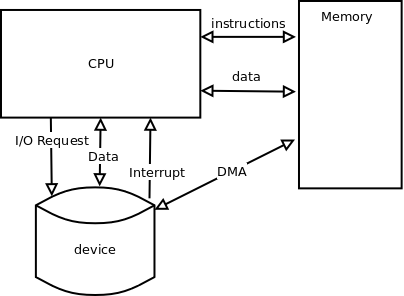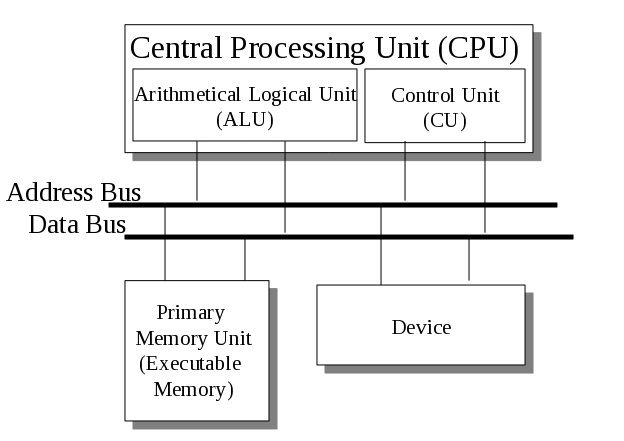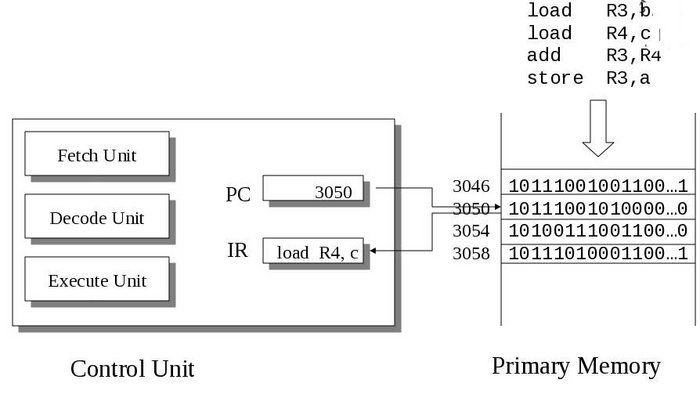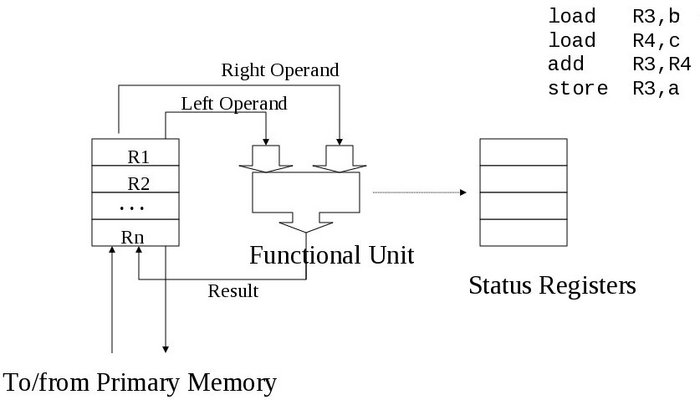1.5. Computer Architecture¶
The interface between a computer’s hardware and its software is its architecture. The architecture is described by what the computer’s instructions do, and how they are specified. Understanding how it all works requires knowledge of the structure of a computer and its assembly language.
The computer is in a sense a communication system. Data is constantly being moved between the CPU, memory and the various devices. The CPU uses I/O addresses to direct data to particular devices. The devices in turn use interrupts to notify the CPU and operating system of their needs.

1.5.1. The von Neumann Architecture¶
The genesis of modern computers, however, came with the practice of storing a program in memory. According to mathematician John von Neumann, for a machine to be a computer it must have the following:
addressable memory that holds both instructions and data.
an arithmetic logic unit.
a program counter.
The important computer architecture components from von Neumann’s stored program control computer are:
- cpu
The central processing unit is the engine of the computer that executes programs.
- alu
The arithmetic logic unit is the part of the cpu that executes individual instructions involving data (operands).
- register
a memory location in the cpu which holds a fixed amount of data. registers of most current systems hold 64 bits or 8 bytes of data.
- pc
The Program counter, also called the instruction pointer, is a register which holds the memory address of the next instruction to be executed.
- IR
The Instruction register is the register that holds the current instruction being executed.
- Accumulator
A register designated to hold the result of an operation performed by the ALU.
- Register File
A collection of several registers.

1.5.2. The CPU Control Unit¶

1.5.3. The Arithmetic Logic Unit (ALU)¶

1.5.4. The von Neumann Loop¶
- Fetch Phase
Fetch the next instruction and store it in the instruction register
- Execute Phase
The ALU or I/O unit executes the instruction
ALU does calculations
I/O unit loads or stores data between main memory and registers
PC = <machine start address>;
IR = memory[PC];
haltFlag = CLEAR;
while(haltFlag not SET) {
execute(IR);
PC = PC + sizeof(INSTRUCT);
IR = memory[PC]; // fetch phase
};
